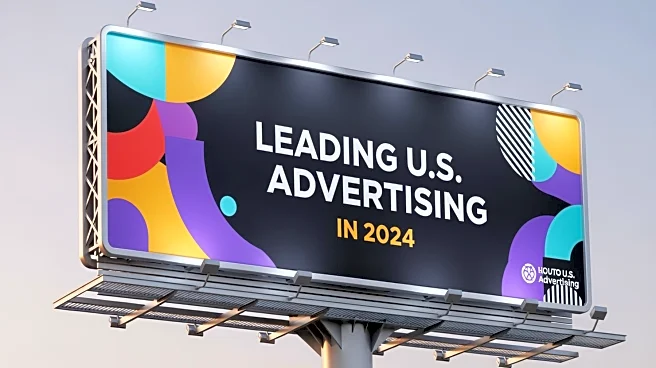What's Happening?
The global retail media ad market is projected to surpass $200 billion by 2027, according to WARC analysts. Despite strong growth, the rate is slowing as attention shifts from sponsored search to diverse
channels like social media and connected TV (CTV). Retailers are transitioning from media sellers to media platforms, navigating a fragmented array of channels amidst industry consolidation dominated by major players like Amazon and Walmart. This shift is driven by brands seeking more integrated digital budgets and the adoption of agentic AI, which impacts human traffic volumes that have traditionally monetized retail media networks.
Why It's Important?
The evolution of retail media networks (RMNs) reflects broader changes in digital advertising, where brands are increasingly selective with their ad spend. The dominance of major players like Amazon and Walmart, which are expected to account for over 84% of US retail media ad spending by 2025, pressures smaller RMNs to innovate or partner with third-party tech providers. This consolidation could lead to fewer choices for advertisers and potentially higher costs. The integration of agentic AI and full-funnel solutions like CTV and social media may redefine success metrics, emphasizing efficiency and cross-channel targeting.
What's Next?
Retailers lacking the scale of industry giants must develop sophisticated media ecosystems to remain competitive. The shift towards commerce media, offering full-funnel solutions, suggests a need for new strategies and success metrics beyond traditional conversion-focused approaches. As brands merge shopper marketing, trade, and digital media budgets, RMNs must adapt to provide measurable, robust offerings. The continued expansion of Amazon's demand-side platform (DSP) partnerships, including TV streaming platforms, indicates a growing emphasis on reaching connected TV households.
Beyond the Headlines
The consolidation within the retail media industry raises ethical and competitive concerns, as smaller players may struggle to compete against giants with extensive first-party data. The integration of agentic AI could further disrupt traditional advertising models, challenging the balance between human creativity and automated processes. This shift may also influence cultural perceptions of advertising, as brands explore new channels and formats to engage consumers.












